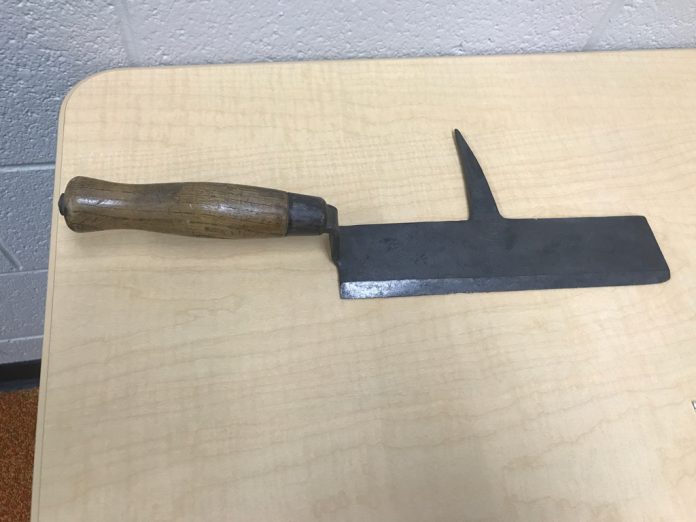Hello from Hazard!
We also heard from Dan Laurion, Dunbar, Pa.; and Fred Moore, in Seward, Alaska, on Item No. 1092, the tire lug chain we had featured for several weeks and finally identified in the Nov. 23 issue.
Fred writes, “If my old pickup truck was stuck real bad and I had some Item No. 1092s, I would chain at least one around the tire and rim of each drive wheel and, if I didn’t gun the engine too much, there is a fair chance I could drive out.
“That or get stuck even worse.”
Thanks to you both for the emails (and the laugh!).
And it didn’t take long for readers to identify Item No. 1093 submitted by Gayle Blair, of Beloit, Ohio. It’s a dough bucket or bread maker. You put in the ingredients, turn the crank to mix them, then let the dough rise, and stir it again to knead.
Lorelei Lopick, of Canton, Ohio, identified it as a Universal bread maker. She has one manufactured in 1939, and adds that according to information she has, Universal (Landers, Frary & Clark) has been out of business since 1965.
James Freeman, Middlefield, Ohio, also responded with the correct identification.
This week’s item, Item No. 1094, comes from Monroe Harbage, of Plain City, Ohio. Do you know how it was used?
Email your responses to editorial@farmanddairy.com; or respond by mail to: Hazard a Guess, c/o Farm and Dairy, P.O. Box 38, Salem, OH 44460. And if you’re on our website, you can also respond in a comment on our Hazard post.














I think it what’s called a “slater’s axe” (a.k.a. a “sax”, et al). From http://www.wonkeedonkeetools.co.uk: “A slater’s axe can also be called a sax, slate cleaver, slate trimmer, saxe, or zax. It’s a cutting tool designed to be used in conjunction with a bench iron (also called a slater’s anvil), or a similar solid surface, to trim sheets of natural slate to size. Individual slater’s axes will either be left or right handed, as the blade is offset from the handle to protect the users hand from chips of slate. They also have a spike protruding from the butt of the blade which can be used to punch holes in slate.”
Absolutely correct!
How can I have a tool identified?
Email a photo and description to editorial@farmanddairy.com.